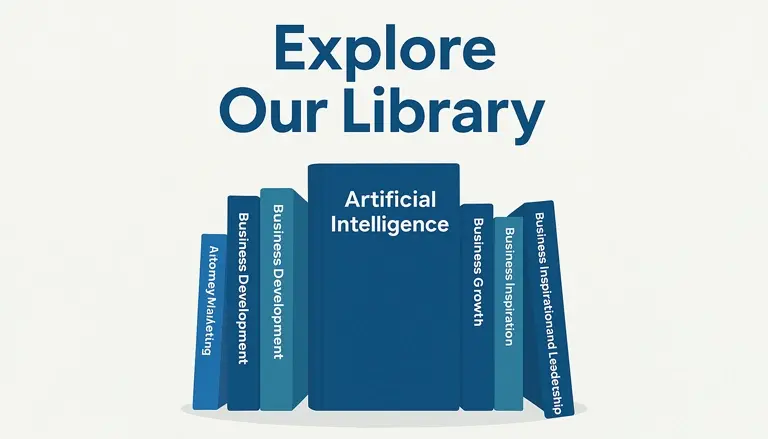

How to Integrate NPS Scores into Your Reputation Strategy
Posted March 25, 2025 by Kevin Chern
“Your most unhappy customers are your greatest source of learning.” — Bill Gates
When a company’s reputation is on the line, it’s not the 5-star reviews that shape the future—it’s the 2s and 3s quietly slipping out the back door. You don’t lose business in explosions. You lose it in whispers. And if you’re not listening, your brand becomes the conversation others have about you when you’re not in the room.
Enter: Net Promoter Score—or NPS, if you’re on familiar terms.
If you’re treating your NPS score like a vanity metric, you’re missing the plot. Used strategically, NPS is one of the most powerful levers in your reputation management strategy—and a clear window into customer loyalty, churn risk, and brand advocacy.
Let’s talk about how to weave NPS into the very fabric of your business reputation playbook.
Why NPS is More Than Just a Number
The premise is deceptively simple: “On a scale of 0 to 10, how likely are you to recommend us to a friend or colleague?”
That single question has become the bedrock of customer experience measurement for brands across every industry. And for good reason.
Fred Reichheld, the Bain & Company consultant who developed NPS, found that companies with the highest NPS in their category grow at more than twice the rate of their competitors.¹
NPS doesn’t just measure satisfaction—it measures emotional investment. It asks not only whether a customer likes your product, but whether they’ll stake their own reputation on it.
That’s the gold.
The Anatomy of an NPS Score
Let’s break it down:
- Promoters (9–10): Raving fans. They’ll refer, repurchase, and forgive a stumble.
- Passives (7–8): Lukewarm. Not unhappy, but not loyal. Vulnerable to competitors.
- Detractors (0–6): Unhappy customers. They churn. And worse, they tell others why.
Your NPS is calculated by subtracting the percentage of Detractors from the percentage of Promoters.
NPS = % Promoters – % Detractors
Simple math. But don’t let the simplicity fool you.
From Score to Strategy: Why Business Owners Should Care
If you’re running a business, reputation isn’t a line item. It’s your equity. Your moat. And if NPS is your reputation thermometer, you need to act like a doctor—not just a data collector.
According to Qualtrics, **companies that actively manage customer experience with NPS data increase customer retention rates by up to 15%.**² That’s a seismic shift for any recurring revenue model.
Now let’s turn that number into a navigational compass for your brand reputation.
1. Embed NPS at Critical Touchpoints—Not Just After Purchase
Too many companies treat NPS like a post-mortem. It’s the final bow after the customer’s journey. But feedback works best when it’s part of the story—not the epilogue.
Consider these strategic NPS moments:
- After onboarding or implementation
- After a customer service interaction
- After a renewal decision
- After key feature usage (for SaaS)
This gives you directional insight during the customer lifecycle, not just at the end of it. You want to diagnose before the patient walks out.
A study from Retently showed that response rates jump by 21% when NPS is tied to meaningful milestones instead of automated triggers.³
2. Segment NPS Data to Identify Reputation Drivers
Your overall NPS is a pulse, but segmented NPS is the EKG.
Drill down by:
- Product lines
- Locations or regions
- Customer type (new vs. long-term)
- Support rep or account manager
- Communication channels (chat vs. email vs. phone)
This tells you exactly where your brand promise is breaking—or exceeding—expectations.
Think of it like smoke detectors. One high NPS region doesn’t mean you’re fireproof. Another is burning silently—and segmentation will tell you where.
3. Close the Feedback Loop with a Reputation-First Mindset
Here’s where NPS shines—not in collecting data, but in what you do next.
Follow-up with Detractors within 48 hours. Not with an apology template. With a human touch.
Turn Passives into Promoters by identifying what’s missing. Maybe it’s a billing issue. Maybe they just didn’t get a thank you.
Celebrate Promoters. Ask for reviews. Get testimonials. Offer referral incentives. Turn silent fans into brand advocates.
Companies that close the NPS feedback loop see a 3x increase in customer lifetime value compared to those who don’t.
That’s not a “nice to have.” That’s a strategy.
4. Use NPS as a Reputation Benchmark Across Channels
Let’s get tactical.
Your online reputation lives across:
- Google Reviews
- G2, Capterra, or Trustpilot
- Social media comments
- Customer support transcripts
Use your NPS to prioritize who you invite to review and where:
- Promoters? Push to Google or third-party platforms.
- Passives? Direct to private feedback forms.
- Detractors? Route internally for resolution.
This creates a buffered funnel where your public-facing reputation is protected while still harvesting actionable feedback behind the scenes.
Companies using NPS in this way report a 26% higher average online review score compared to peers who don’t segment feedback channels.
5. Connect NPS to Employee KPIs and Culture
Your reputation doesn’t start with the customer. It starts with your team.
Make NPS a shared metric across:
- Customer success teams
- Sales reps
- Product managers
- Frontline support staff
Integrate it into dashboards. Tie it to quarterly bonuses. Most importantly, tell the stories behind the numbers.
Celebrate promoter feedback in team meetings. Deconstruct detractor comments during retrospectives. Make NPS part of your company’s shared narrative.
Organizations that do this see employee engagement scores 20% higher, according to Gallup research.⁶ Because people want to know the work they do matters—and customers are watching.
6. Predict Churn and Shape Reputation in Advance
NPS is one of the few early-warning signals that tells you when churn is coming.
According to Zendesk, customers who leave a score of 6 or below have a 3x higher churn rate than those who leave no score at all.⁷
That’s your smoke signal.
Use predictive modeling to tie NPS to:
- Subscription cancellations
- Reduced product usage
- Increased support ticket frequency
And then deploy retention strategies before the fallout:
- Targeted outreach from account managers
- Product coaching
- Loyalty incentives
Your reputation isn’t just what customers say about you—it’s how they remember being treated when things went wrong.
7. Feed NPS Insights into Your Brand Messaging
Here’s the fun part: Let your customers write your copy.
When you analyze promoter feedback at scale, you start to see patterns:
- “Easy to work with”
- “Solved my problem fast”
- “Felt like a partner, not a vendor”
These aren’t just compliments. They’re your reputation keywords—and they should appear in your:
- Homepage copy
- Social media bios
- Sales decks
- Elevator pitch
This creates resonance. When future customers see the same words that real customers use, it builds trust before the first conversation.
8. Track NPS Alongside Other Reputation Signals
NPS doesn’t live in a vacuum. Pair it with other indicators to get the full picture:
- CSAT (Customer Satisfaction Score) for tactical feedback
- CES (Customer Effort Score) for ease of use
- Online sentiment analysis (via tools like Sprout Social or Brand24)
- Referral rates and review velocity
When your NPS is high and referrals are low, something’s off.
When your CSAT is great but NPS is dipping, you may be delighting at the task level but failing emotionally.
This triangulation keeps you honest.
9. Turn NPS into a Reputation Growth Engine
Reputation is momentum. NPS gives you the gas pedal.
Use it to:
- Launch advocacy programs for your top Promoters
- Design VIP retention campaigns for top-tier Passives
- Build public case studies from qualitative feedback
- Establish internal benchmarks for every team
And yes—publish your NPS when it’s solid. Make it part of your pitch deck. Include it in proposals. Use it as reputation proof during sales cycles.
Trust is your most valuable currency. NPS is how you mint it.
So—What’s Your NPS Really Telling You?
Your Net Promoter Score isn’t just a number on a dashboard. It’s the heartbeat of your brand’s reputation.
When used with care, it becomes:
- A megaphone for advocates
- A lifeline for at-risk customers
- A compass for leadership
- A scoreboard for employees
And when you tie it directly to your reputation strategy, you stop reacting to perception and start shaping it—deliberately, intelligently, and with precision.
The businesses that lead with data and empathy don’t just manage reputations—they build legacies.
So, the real question is: Are you listening to what your NPS is trying to tell you—or just reading the number?
Tags:




